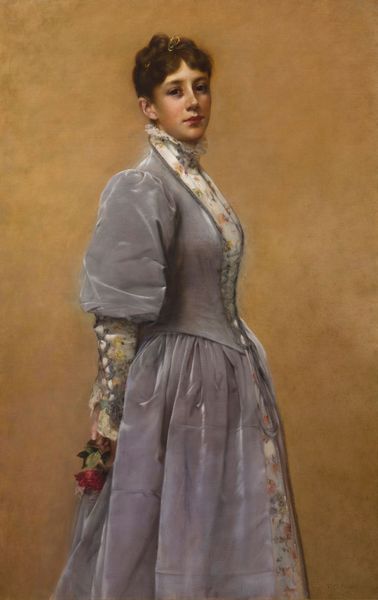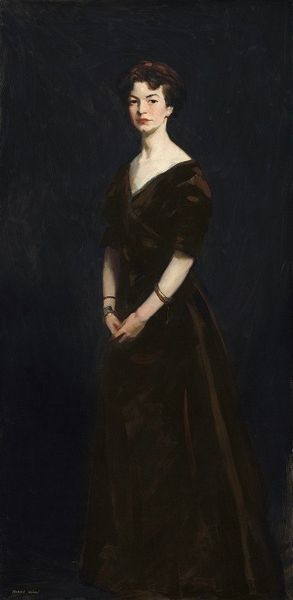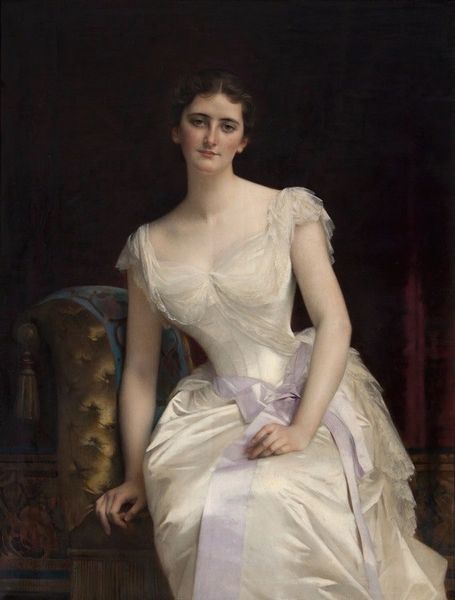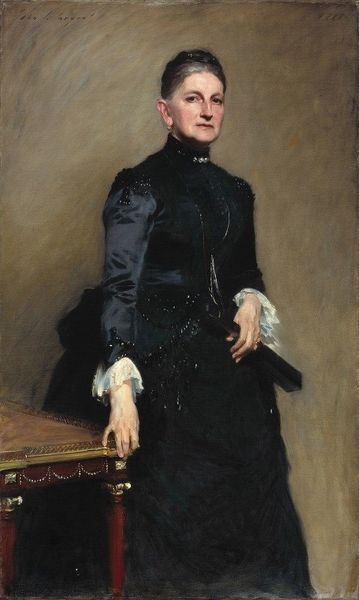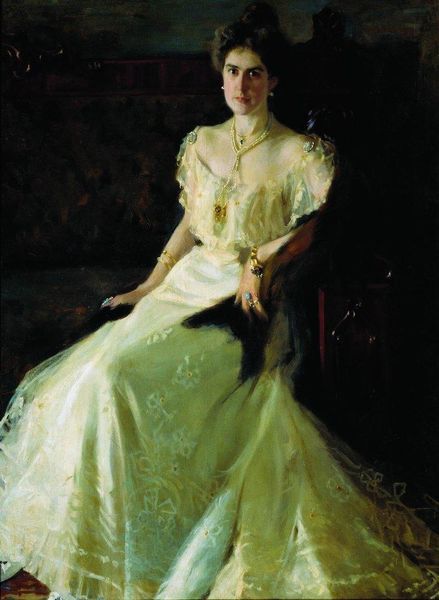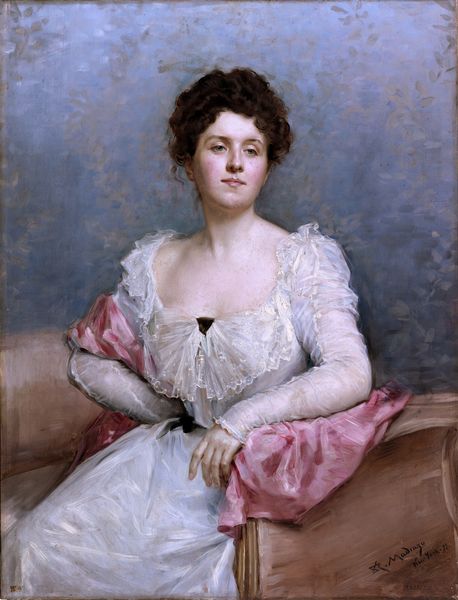
painting
#
portrait
#
painting
#
impressionism
#
academic-art
#
realism
Copyright: Public Domain: Artvee
John Singer Sargent painted “Elizabeth Allen Marquand” amidst the shifting social dynamics of the late 19th century. As industrialization transformed American society, class distinctions became ever more pronounced. Portraits like these were more than mere likenesses; they were statements of identity and social standing. The dark tones of Elizabeth's dress contrast with the delicate lace at her neck, hinting at both the sobriety and the privileges of her station. Sargent’s brushwork captures not just her physical appearance, but a sense of her presence, her dignity. We can see not only her wealth, but also an individual navigating the complexities of her time. The fan she holds is not just an accessory, but a symbol of both poise and the subtle power women held within the constraints of their era. As you stand before this portrait, consider the many facets of identity it reveals: a woman, a member of the upper class, and a figure caught in the currents of history. What does it mean to be seen, to be represented, and to leave a lasting image for future generations?
Comments
No comments
Be the first to comment and join the conversation on the ultimate creative platform.



